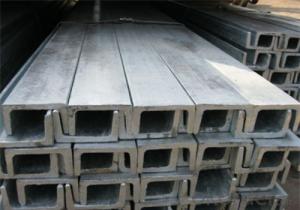Reinforcing Bar: A Construction Staple
When you think of construction, what comes to mind? Heavy machinery, towering cranes, and endless piles of materials? Well, there’s one unsung hero that plays a crucial role in almost every construction project – the reinforcing bar, commonly known as rebar. This humble yet essential component is the backbone of modern construction, providing strength and stability to structures that we rely on every day.
The Unsung Hero of Construction
Rebar is made from steel, which is known for its incredible tensile strength. It’s this strength that makes rebar such a valuable asset in the construction industry. When concrete is poured around rebar, the combination creates a composite material that is both strong and durable. The concrete protects the steel from corrosion, while the steel reinforces the concrete, preventing it from cracking under stress. It’s a beautiful partnership that has stood the test of time.
A Brief History Lesson
The use of rebar dates back to ancient Rome, where iron rods were used to reinforce concrete structures. However, it wasn’t until the 19th century that rebar really took off, with the advent of modern steel production techniques. Since then, rebar has become an indispensable part of the construction process, used in everything from bridges and skyscrapers to roads and homes.
The Making of Rebar
The process of making rebar is both fascinating and complex. It starts with the selection of high-quality steel, which is then heated and rolled into long, slender bars. These bars are cut to specific lengths and shapes, depending on the project’s requirements. The rebar is then treated to resist corrosion, ensuring that it will last for decades, even when exposed to harsh environmental conditions.
The Many Faces of Rebar
Rebar comes in a variety of shapes and sizes, each designed to serve a specific purpose. Straight rebar is used for general reinforcement, while bent rebar is used in corners and other areas where a curved shape is needed. Deformed rebar, with its characteristic ridges, offers better bonding with the concrete, while welded wire fabric provides a more even distribution of reinforcement.
The Art of Placement
Placing rebar correctly is an art in itself. Skilled workers carefully position the bars within the formwork, ensuring that they are evenly spaced and properly secured. This attention to detail is crucial, as any misplacement can compromise the integrity of the structure. Once the rebar is in place, the concrete is poured, binding the rebar and the concrete together in a strong, unified whole.
The Role of Rebar in Disaster Prevention
Rebar plays a significant role in disaster prevention and mitigation. Its strength and flexibility allow structures to withstand earthquakes, hurricanes, and other natural disasters. In areas prone to such events, rebar is a vital component in ensuring the safety and resilience of buildings and infrastructure.
The Future of Rebar
As we look to the future, the demand for rebar is only set to increase. With the world’s population growing and urbanization on the rise, the need for strong, durable structures is greater than ever. Innovations in rebar production and usage are also on the horizon, with new materials and techniques being developed to make rebar even more effective and sustainable.
A Tribute to the Steel Skeleton
In conclusion, rebar is more than just a construction material; it’s the silent guardian of our built environment. Without it, our cities would be less safe, our homes less secure, and our infrastructure less resilient. So next time you walk past a construction site, take a moment to appreciate the steel skeleton that will soon rise to support the structure above. It’s a testament to human ingenuity and the power of collaboration between man and material.

